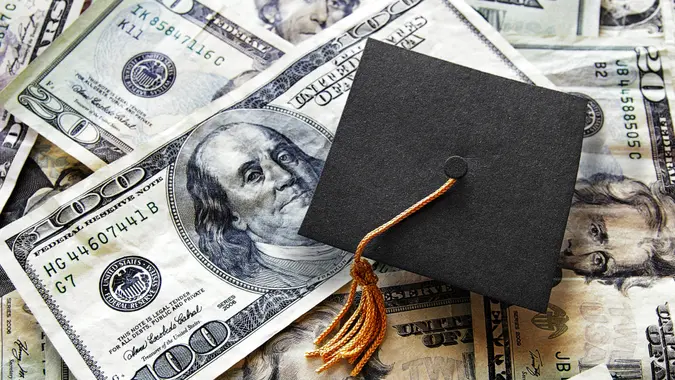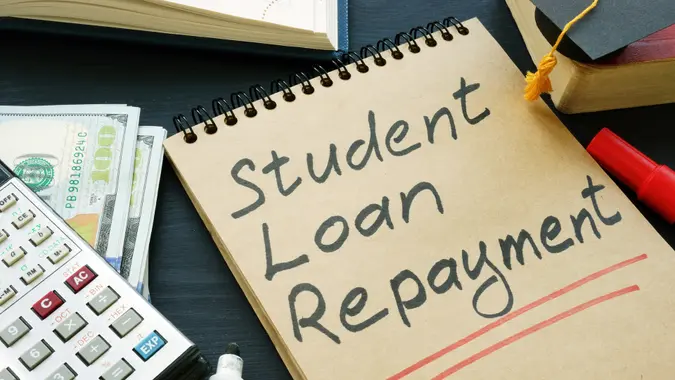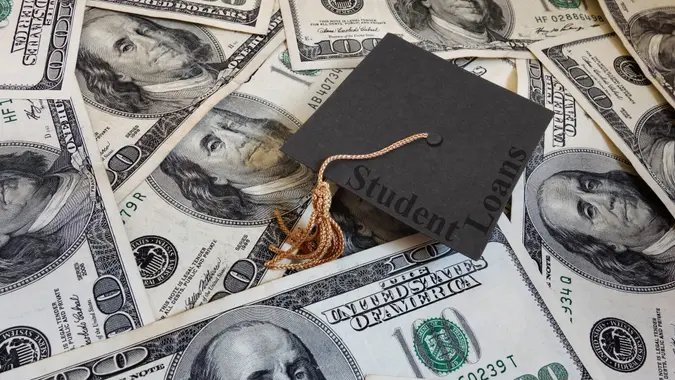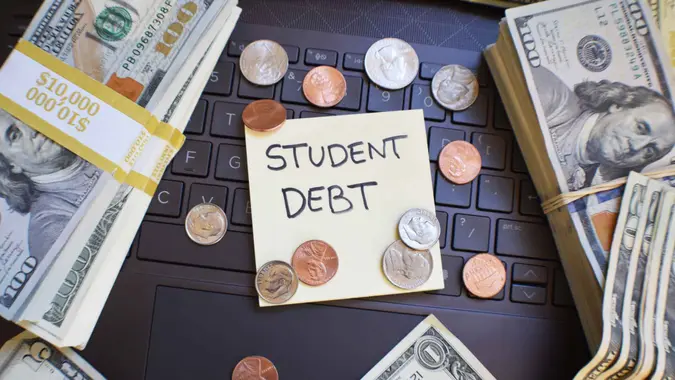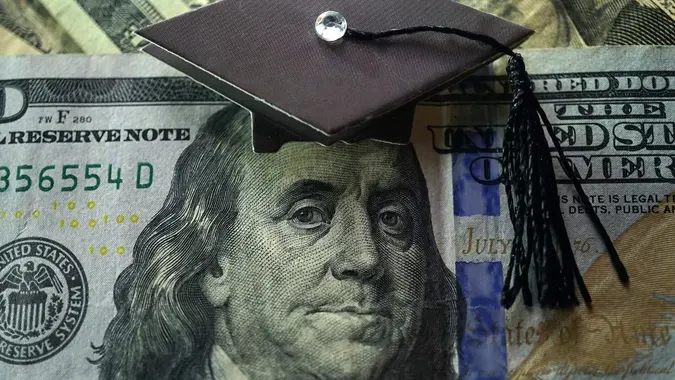Student Loans: 4 Hidden Reasons You Can’t Seem To Pay Them Down

Commitment to Our Readers
GOBankingRates' editorial team is committed to bringing you unbiased reviews and information. We use data-driven methodologies to evaluate financial products and services - our reviews and ratings are not influenced by advertisers. You can read more about our editorial guidelines and our products and services review methodology.

20 Years
Helping You Live Richer

Reviewed
by Experts

Trusted by
Millions of Readers
Many student loan borrowers often find themselves in the same familiar, frustrating situation. Despite making payments consistently each month, they can’t seem to pay down their student debt.
Some borrowers will pay for years and struggle to clear their balance in full. Why does this happen? Why doesn’t their student loan balance drop as quickly as they would expect?
Here are the hidden reasons why borrowers can’t seem to pay down student loans.
Choosing the Repayment Plan With the Smallest Monthly Payment
Borrowers with federal student loans may opt for an income-driven repayment plan where payments can be as low as $0. However, these plans do not guarantee the accrued interest will be covered or paid each month.
Elaine Rubin, director of corporate communications at Edvisors, said borrowers who experience negative amortization — which increases the borrower’s debt — will be shocked to see their outstanding balance either increases or stays the same even after years of making payments.
Capitalization of Interest
Zack Geist, founder of Student Loan Tutor, said capitalization of interest occurs in these situations:
- Any time the borrowers’ loans go into forbearance or deferment status
- The borrower changes plans from one income-driven repayment plan to another
- Consolidating the loans
- Late on Annual Recertification due yearly for income-driven repayment plans
- Loan servicer makes a mistake or doesn’t process paperwork
“These scenarios can all result in interest accruing on a higher amount and making it impossible to catch up without paying more to cover the additional interest,” said Geist.
Waiting To Qualify for Loan Forgiveness
Another hidden reason why borrowers can’t seem to pay down student loans is because they are assuming they will qualify for loan forgiveness and choosing repayment plans with long repayment terms.
Rubin said no assumptions should ever be made about student loan forgiveness, especially forgiveness with income-driven plans. Today, income-driven repayment plans have repayment periods of up to 25 years. The longer the repayment term is, the lower the monthly payment made to the loan.
While many borrowers may have extremely low payments for a certain number of years, Rubin said changes to income and/or marital status could significantly increase monthly payments. This will result in little or no forgiveness from an income-driven repayment plan.
Being Unaware of Public Service Loan Forgiveness
Many eligible borrowers may not be aware of Public Service Loan Forgiveness (PSLF).
Those who are employed by a U.S. federal, state, local or tribal government or not-for-profit organization or are interested in taking a public service job may qualify for the PSLF Program. If you have made 120 qualifying monthly payments under a qualifying repayment plan while working full-time for a qualifying employer, your remaining Direct Loans balance may be forgiven through PSLF. Learn more through FAFSA about qualifying types of employment and how to apply for PSLF.
More From GOBankingRates
 Written by
Written by  Edited by
Edited by 



